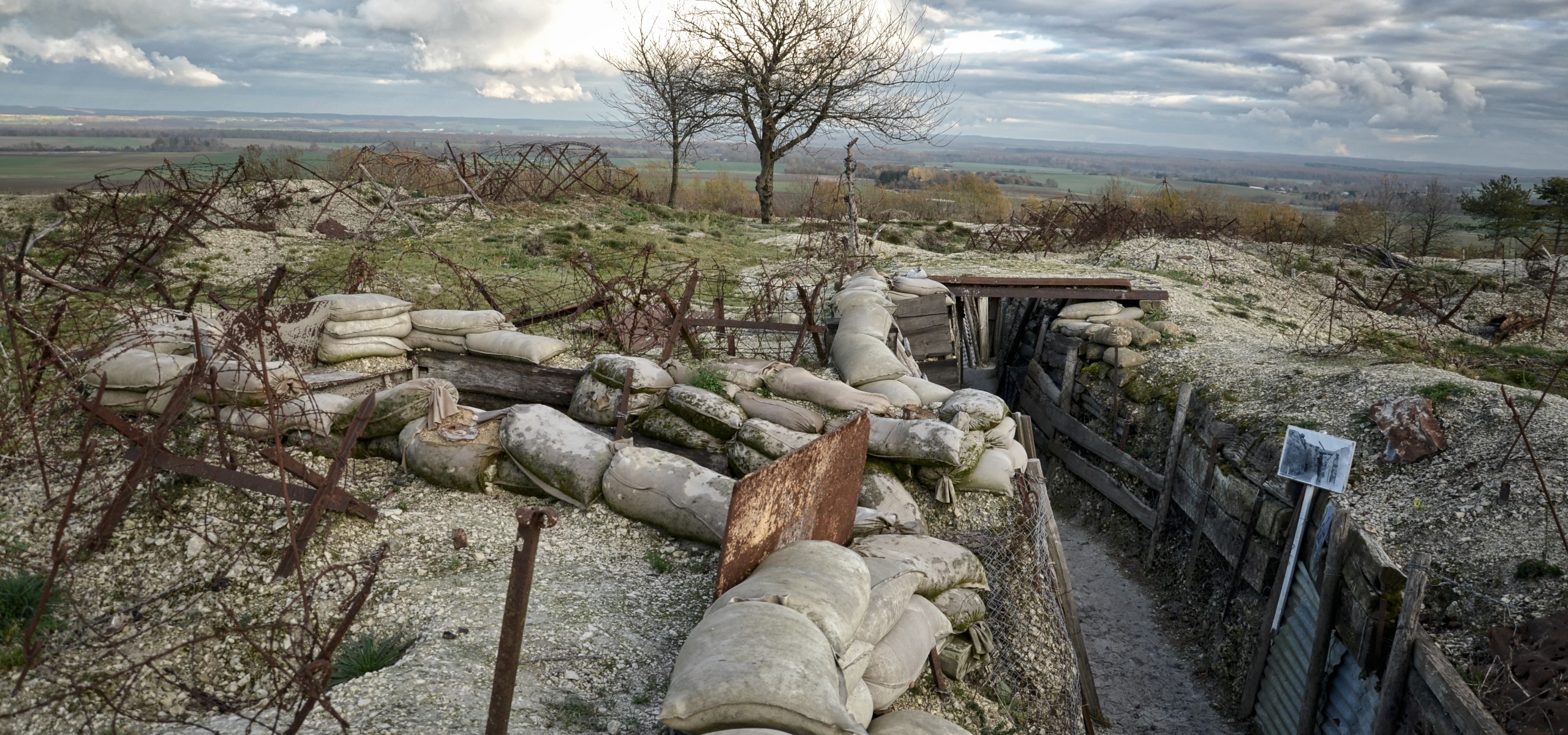WW1 Revisited
A Great War Journey with Paul Reed

Archives

The First World War trenches at Main des Massiges have featured several times on this site recently and understandably so as they are among the most impressive anywhere on the Western Front. Here a local association has used experimental archaeology to recreate both French and German trenches from the early war period. This was an area that saw heavy fighting in 1915 including some of the earliest examples of war underground with… Read More

The trench system at Main de Massiges, a hillside in the Champagne battlefields that was the scene of heavy fighting in 1915 and became almost a household name in France, is one of the most impressive on the Western Front today. Trenches have been excavated and restored by a local association as can be seen in this aerial image. Known by very few visitors to the battlefields the Main de Massiges trenches… Read More

Trenches that look anything like what they did a century ago are very rare but this site in the Champagne is quite amazing and has featured on this site before. This image was taken this week looking out across the fields where the fighting was very heavy in September 1915. A full article on this site will appear on WW1 Revisited this winter.

The landscape of Flanders around the city of Ypres was covered with the remains of trenches when the war ended in 1918 but as the civilian population returned and reclaimed their land, gradually they disappeared. Original trenches can only be seen in a few locations around Ypres now but for new generations coming to the battlefields it is often hard to equate muddy ditches or shallow holes with what was once here…. Read More

When the Great War went static during the winter of 1914/15 and trench warfare began, steel “sniper’s plates” started to be used by both sides to afford protection to their troops and enable them to fire safely across No Man’s Land. There were many designs of these and some just had a hole to fire through, while others used a ‘key-hole’ system so that the protected area could be sealed up again… Read More

The Tranchée de Calonne, despite it’s name, was not actually a trench: tranchée being the French for trench. Instead it was a long road running for more than 25km through the wooded area south-east of Verdun into what became known as the Saint Mihiel Salient. The area saw heavy fighting from September 1914 and some of the earliest trenches used by the French Army were dug among the trees here. French writer Alain… Read More

The Tranchée des Bavarois, or Bavarian Trench, was part of a German system of trenches in the St Mihiel Salient, south of Verdun. The positions here were strengthened from 1915 onwards and a large number of concrete structures put in place, from concrete lined firing positions in the trenches to infantry shelters and mortar and machine-gun posts. This bunker was made by a Bavarian Pioneer company in 1915/16 and sheltered men from… Read More

Comments on WW1 Revisited